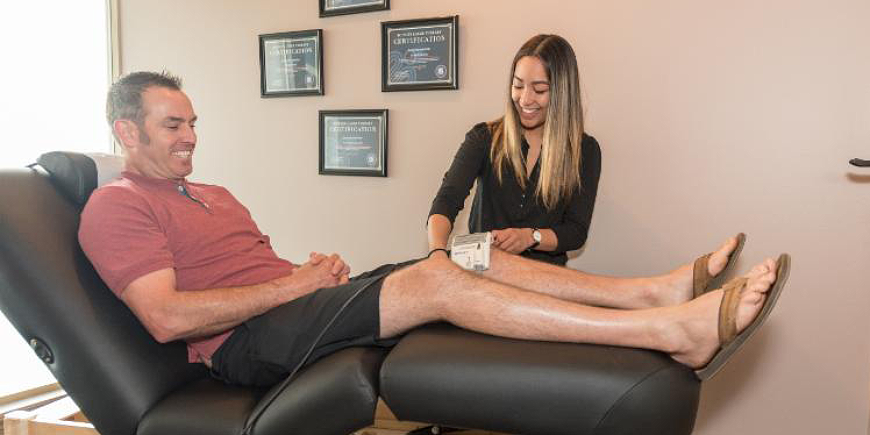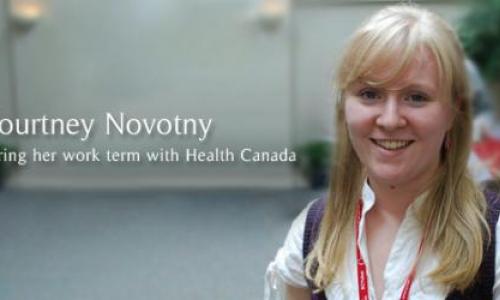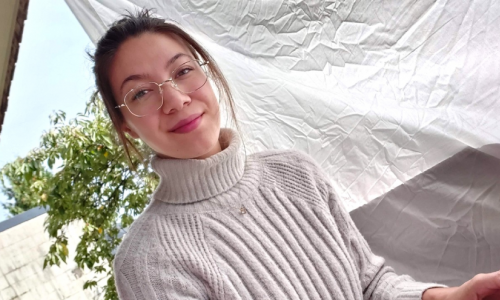
When I first started working at DesLauriers Chiropractic Group Inc. as a Laser Therapist/Clinic Office Assistant, I was not entirely aware of what to expect. It was a rough first couple of days trying to adjust to the working conditions of a busy chiropractic office, but eventually I got used to working under these standards. The office consists of two Doctors of Chiropractic, two Medical Office Assistants, and one Laser Therapist. Although it is a 9am to 6pm job, every day is different. This placement has taught me that learning occurs every day and everywhere, no matter how far you are in your profession. What’s great about this placement is that I am constantly learning from the examples of my peers. The doctors, Dr. Kim Greene-DesLauriers and Dr. Pierre DesLauriers, are consistently reviewing textbook material, looking for articles to verify their findings and, best of all, teaching their staff. As the Laser Therapist and Clinic Office Assistant, I too consistently learn about the different conditions that I am treating, researching and preparing for questions from the patients, and also teaching the patients about their conditions and how Laser Therapy can help.
Background Information on Laser Therapy
You may be wondering, what is Laser Therapy? Well, it is a non-invasive and non-toxic form of low level light (laser) therapy that uses red light and infrared light for healing and pain relief. It is also known as photobiostimulation or cold laser. Laser Therapy, “promote[s] major physiological effects, such as anti-inflammatory resolution, neoangiogenesis, epithelial and fibroblast resolution, collagen synthesis and disposition, revascularization and wound contraction” (Andrade, Clark, & Ferreira, 2014, p. 129-133). It is a safe alternative to healing and care that can be used to treat the following conditions:
1. Soft Tissue & Sports Injuries
- Ligament, tendon, muscle damage
- Tenosynovitis
- Contusions/Hematomata
2. Arthritic Conditions
- Degenerative Osteoarthritis
- Rheumatoid Arthritis
- Chronic Spinal Problems
3. Repetitive Stress Injuries
- Carpal Tunnel Syndrome
- Rotator Cuff Injuries
- Tennis Elbow
4. General Health Problems
- Herniated Disc
- Fibromyalgia
- Temporo-Mandibular Joint Syndrome
5. Tissue Repair & Wound Healing
- Traumatic Lesions (Burns)
- Venous Stasis
- Compression
How I Continue to Learn in the Office
Classroom learning is only one form of learning. Being able to apply classroom knowledge to a treatment situation is another form of learning, a kind of learning that requires practice. This co-op practicum is the best place to get this kind of experience. As the Laser Therapist, I am responsible for patient’s health and well-being. For every patient, we have a treatment plan that consists diagnosis determined by the doctor as well as the prescribed about of treatments per week. Information about the patient’s treatment plan is thoroughly discussed between myself and the doctor. This is a crucial component in the patient’s care because information about treatment protocol and proper procedure is discussed. From then, I am able to research more about the condition and prepare for the weeks of treatment with the patient. I have found that the more knowledgeable I am about the patient’s condition, the more comfortable they feel with me and with their care.
Applying Knowledge to Teach and Not just Treat the Patient
It is important that your patient feels comfortable during each treatment. The best way to prevent the patient from hesitating or stopping treatment is to be knowledgeable in what you are doing. Repeating information is a great way to get a point across. Patients love to be affirmed and encouraged to continue treatment, especially when they see progress. Although sometimes, healing may take time, it is important to teach the patient about their condition and stress the benefits of the treatment. One of the ways I teach my patients is using the 3D 4Medical: Essential Muscle + Skeleton Anatomy App, which is a great learning tool that identifies bones, connective tissue, tendons, ligaments, muscles, and insertion and origin points. With this, I use my vast knowledge of anatomy to teach patients about the origin of their condition and how Laser Therapy, as a form of care, can be used to treat it.
Continue to Learn Outside of the Classroom
Learning does not just occur inside of a classroom or lecture hall. Working at DesLauriers Chiropractic Group Inc., I have been able to utilize knowledge obtained in the classroom and expand on this knowledge by applying it in a hands-on treatment setting. This experience has given me an entirely new outlook on how learning occurs. Working directly with patients and utilizing applications such as the 3D 4 Medical, I have learned a great deal about the conditions I am treating and how teaching a patient about their condition, in addition to treating them, has a positive influence on the patient-caregiver relationship and on the level of care they receive.
References
Andrade, F., Clark, R., & Ferreira, M. (2014). Effects of low-level laser therapy on wound healing. Revista Do Colégio Brasileiro De Cirurgiões, 41(2), 129-133. http://dx.doi.org/10.1590/s0100-69912014000200010
Beyond the Blog
-
For more opportunities like Kim's visit the BPK co-op page!













